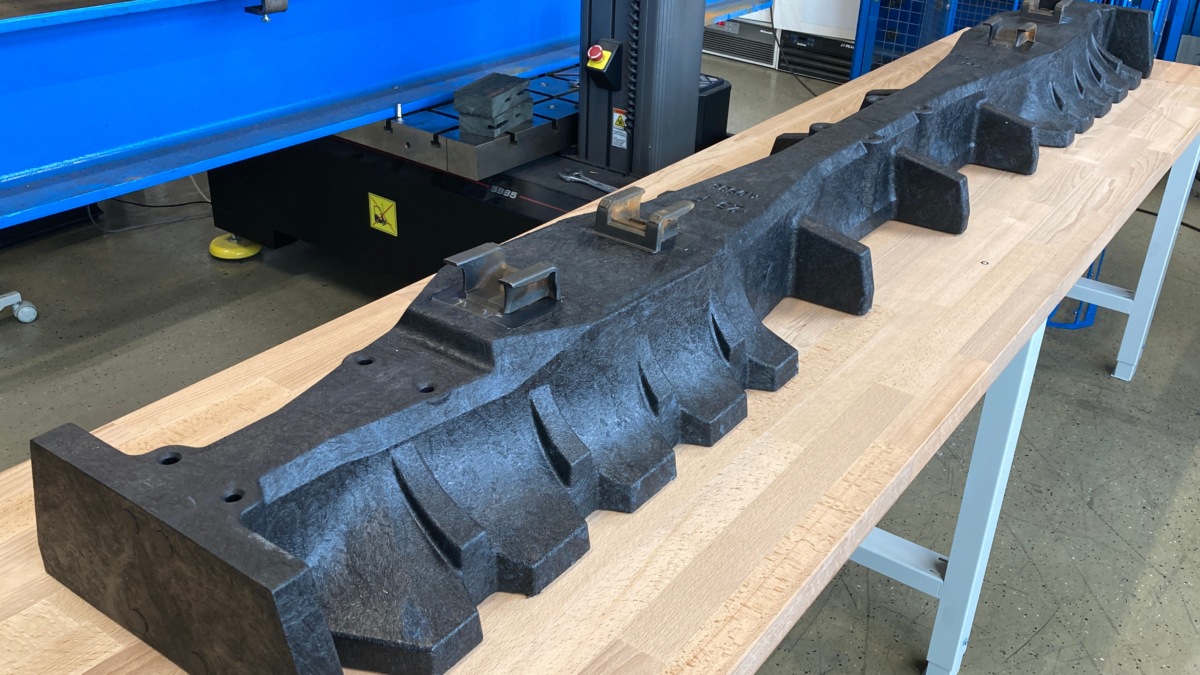Network Rail’s Wales and Western region has developed a new type of sleeper – used on the railway to support the track – with environmental benefits.
The region worked with Network Rail’s Technical Authority, responsible for safety and engineering, to create ‘hedgehog’ sleepers – so nicknamed because the ends look like hedgehogs nesting under the rail. The sleepers contain 90 per cent less embedded carbon than wooden models and 78 per cent less than those made from concrete. As part of Network Rail’s sustainability strategy, research found that sleepers account for 30 per cent of the carbon embedded within railway infrastructure.
New technology was sought to reduce the carbon emissions generated by manufacturing these critical components of the track infrastructure and to make sleepers more resilient to climate change.
Currently, Network Rail installs approximately 350,000 concrete sleepers annually. If those were to be replaced with hedgehog sleepers, it could represent an annual carbon footprint reduction of approximately 24.5 million kilograms of carbon dioxide. This is the equivalent of taking 12,250 family cars off the road annually.
In addition, approximately 150,000 wooden sleepers are replaced each year – if the new hedgehog sleepers were used instead, similar carbon equivalent savings could be made.
The sleepers, developed with Lankhorst Engineered Products, are made up of 90 per cent recycled materials and are themselves fully recyclable. As well as reducing carbon emissions, the new composite design means that hedgehog sleepers will last at least twice as long as their concrete counterparts, reducing the need to close parts of the railway to install replacements as they near the end of their working life. The sleepers can also be laid mechanically, which will make replacement quicker and easier.
Nick Matthews, Network Rail’s programme engineering manager, said: “I’m delighted that we’ve been able to work with Lankhorst Engineered Products to develop a new type of sleeper technology that will reduce the carbon impact of the railway quite significantly.
“Previously, sleepers were either made from hardwood or concrete. The raw material for wooden sleepers comes from South American rainforests, which can result in damage to habitats, a reduction in biodiversity, and decreased carbon absorption from rainforests. Producing concrete can also have a damaging impact on the environment and increased carbon emissions.
“We demonstrated the hedgehog sleeper at this year’s Rail Live event in June in the Network Rail village and the attendees were as excited as we are about a new product with excellent practical value as well as environmental benefits.”
Aran van Belkom, Lankhorst Engineered technical director said: “This project is a good fit with our purpose: think limitless, act sustainable for future generations. We appreciate Network Rail’s engagement to set a new industrial standard.”
